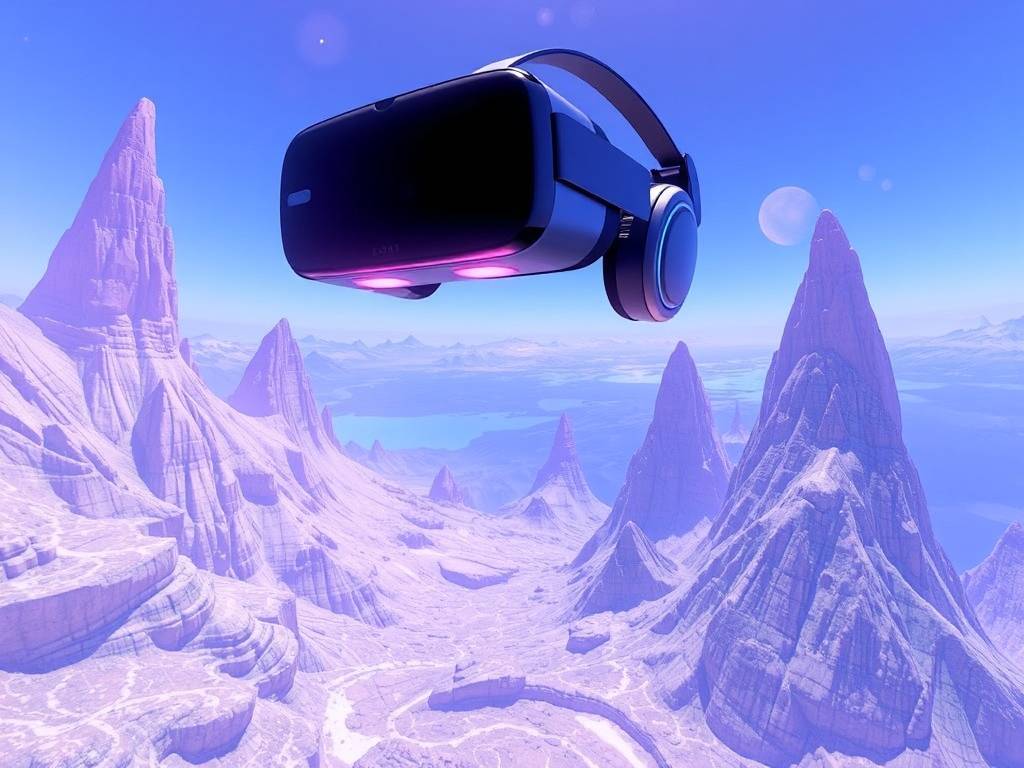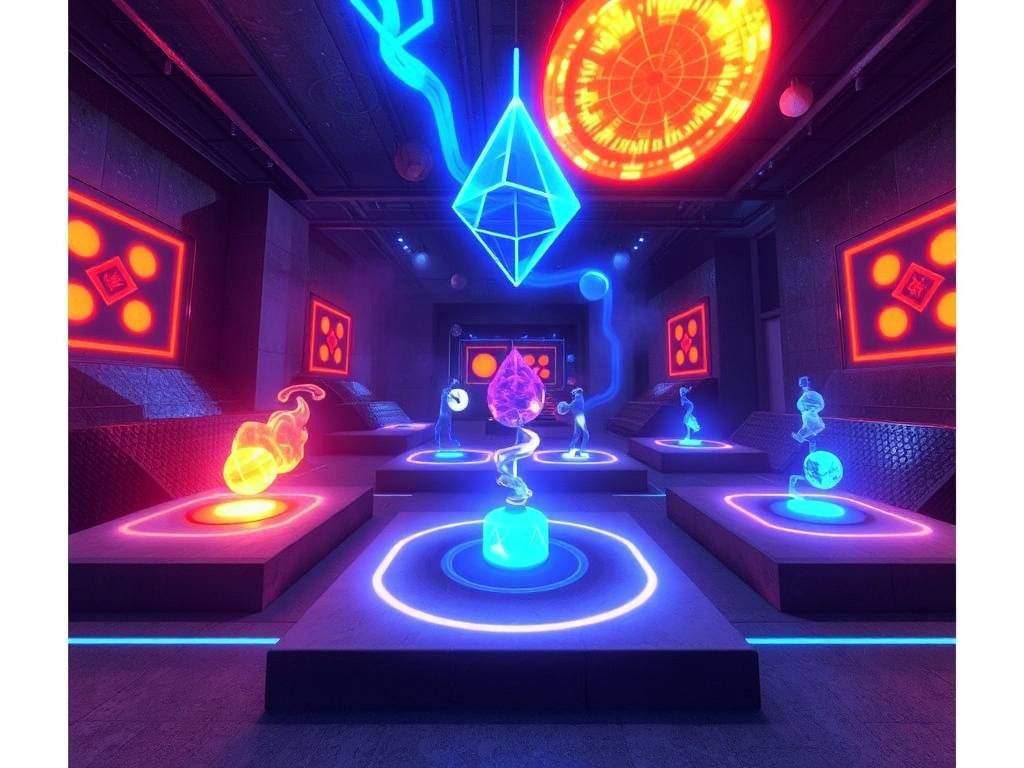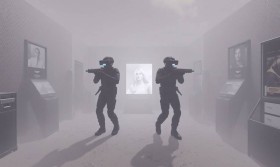Title: Forging Reality: How the Reaction Missions Update Transforms Element Simulator VR from Sandbox to Laboratory
The virtual reality landscape is filled with worlds of fantasy, adrenaline-pumping action, and social hubs. Yet, a quiet revolution has been brewing in a corner dedicated to science education and curiosity: Element Simulator VR. This application, which began as a brilliantly intuitive sandbox for manipulating the periodic table, has carved out a unique niche. It allowed users to conjure elements, combine them in freeform ways, and witness the fundamental laws of physics and chemistry unfold in a captivating, hands-on 3D space. You could create a ball of iron, pour water over it, or even attempt to build a miniature star. But it was, at its core, a sandbox—a place for open-ended play and discovery. The recent "Reaction Missions" update is a seismic shift, a masterful evolution that doesn't just add content but fundamentally redefines the application's purpose, transforming it from a playful sandbox into a dynamic, goal-oriented laboratory.
From Freeform Play to Guided Discovery
Before the update, the primary question a user faced was, "What happens if I...?" This freedom is invaluable and remains a core part of the experience. However, without structure, some users could feel overwhelmed or struggle to find a starting point beyond simple combustion or basic compound creation. The Reaction Missions update brilliantly addresses this by introducing a scaffolded learning path. It provides context, narrative, and, most importantly, purpose.

The update introduces a new terminal within the VR lab, buzzing with incoming assignments from a mysterious "Global Research Initiative." These are the Reaction Missions. They range from simple tasks like "Synthesize Water (H₂O)" to incredibly complex challenges such as "Create a Self-Sustaining Exothermic Reaction Chain" or "Neutralize a Corrosive Acid Spill." Each mission is not merely a recipe to follow but a puzzle to solve. The game provides the objective, but the methodology is left to the user's understanding of chemical principles.
This shift is profound. Instead of randomly combining hydrogen and oxygen to see an explosion, you are now tasked with producing a stable, contained volume of water for a lunar habitat. The goal changes your approach. You consider ratios, containment, and energy input. You learn not just that hydrogen and oxygen react, but how to control that reaction for a specific, practical outcome. This is the difference between knowing a fact and understanding a process.
The Pedagogy of the Puzzle: Learning Through Failure and Success
The true genius of the Reaction Missions lies in their design as puzzles. Failure is not only an option; it is an expected and informative part of the process. The simulator's robust physics engine ensures that mistakes are as educational as successes.
For example, a mission might require you to "Extract Pure Silicon from Sand (SiO₂)." A user might first try to heat the sand intensely. Nothing happens. This teaches them that the bonds in silicon dioxide are incredibly strong. Perhaps they remember that carbon can be used as a reducing agent. They introduce carbon and apply heat, leading to a violent reaction that produces not only silicon but also carbon monoxide—a dangerous byproduct they must now deal with. The mission fails if the lab becomes contaminated. This iterative process—hypothesize, test, observe, analyze, and retry—is the very essence of the scientific method.
The missions are expertly tiered, introducing concepts gradually. Early missions reinforce basic atomic structure and simple compound formation. Later missions delve into stoichiometry, thermodynamics, catalysis, and even rudimentary biochemistry, such as creating the components for a simple amino acid. The learning is organic, driven by the user's desire to solve the challenge at hand. The satisfaction of cracking a difficult mission, like achieving stable nuclear fusion in a magnetic containment field, is immense, and the knowledge gained is deeply ingrained because it was earned through experimentation.
A New Layer of Immersion and Narrative
The update adds more than just goals; it adds a sense of place and purpose to the VR lab. The mission terminal, with its data pads and urgent communiqués, makes you feel like a research scientist on the frontier of knowledge. The missions often come with brief narratives: a mining colony on Mars needs a new fuel catalyst, a medical team requires a specific compound for a vaccine, or an archaeological dig has uncovered a material that needs analysis.
These narrative snippets, while brief, provide crucial context. They answer the question, "Why does this matter?" Synthesizing ammonia isn't just a chemical equation; it's about creating fertilizer to feed a growing off-world population. This contextualization bridges the gap between abstract science and real-world application, making the educational content more meaningful and memorable. The lab is no longer a sterile playroom; it's a vital node in a larger, fictional scientific network.

The Evolving Sandbox: A Symbiotic Relationship
Crucially, the developers have not sacrificed the original sandbox mode. The two experiences now exist in a powerful symbiosis. A player might get stuck on a mission requiring a specific type of polymer. Frustrated, they can jump into the sandbox to experiment freely with different carbon chains and catalysts, without the pressure of success or failure. What they discover in the sandbox can then be applied back to the mission.
Conversely, the techniques and principles mastered in the Reaction Missions empower users to create more sophisticated and interesting contraptions in the sandbox. The update doesn't replace the old way of playing; it enriches it, providing the tools and knowledge to make freeform play even more creative and informed.
Conclusion: A New Standard for Educational VR
The Reaction Missions update for Element Simulator VR is more than a content drop; it is a paradigm shift. It successfully layers guided, goal-oriented learning onto a foundation of free exploration. By framing chemical principles as engaging, challenging puzzles within a light narrative context, it transforms users from passive experimenters into active scientists. It teaches not just chemistry, but critical thinking, problem-solving, and the iterative nature of scientific discovery.
This update solidifies Element Simulator VR's position not just as a fascinating tech demo, but as a premier educational platform. It demonstrates a deep understanding of how people learn—especially in immersive environments—and sets a new standard for what educational VR can and should be. The virtual laboratory is now open for business, and the missions await.
Tags: #ElementSimulatorVR #VRGaming #EdTech #STEMeducation #Chemistry #VirtualReality #GameUpdate #ReactionMissions #ScienceVR #LearningThroughPlay


















